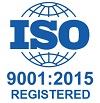With Effect From the Academic Year 2013-14
BIT 453
INFORMATION STORAGE AND MANAGEMENT
(Elective- IV)
Instruction 4 Periods per week
Duration of University Examination 3 Hours
University Examination 75 Marks
Sessional 25 Marks
UNIT-I
Introduction to Storage Technology: Data creation and The value of data to a business, Information Lifecycle, Challenges in data storage and data management, Solutions available for data storage, Core elements of a Data Center infrastructure, role of each element in supporting business activities.
UNIT-II
Storage Systems Architecture: Hardware and software components of the host environment, Key protocols and concepts used by each component ,Physical and logical components of a connectivity environment ,Major physical components of a disk drive and their function, logical constructs of a physical disk, access characteristics, and performance Implications, Concept of RAID and its components, Different RAID levels and their suitability for different application environments: RAID 0, RAID 1, RAID 3, RAID 4, RAID 5, RAID 0+1, RAID 1+0, RAID 6, Integrated and Modular storage systems ,high-level architecture and working of an intelligent storage system
UNIT-III
Introduction to Networked Storage: Evolution of networked storage, Architecture, components, and topologies of FC-SAN, NAS, and IP-SAN, Benefits of the different networked storage options, Understand the need for long-term archiving solutions and describe how CAS fulfil the need, Understand the appropriateness of the different networked storage options for different application environments.
UNIT-IV
Information Availability, Monitoring & Managing Data Center: Reasons for planned/unplanned outages and the impact of downtime, Impact of downtime. Differentiate between business continuity (BC) and disaster recovery (DR), RTO and RPO, Identification of single points of failure in a storage infrastructure and solutions to mitigate these failures, Architecture of backup/recovery and the different backup/ recovery topologies, replication technologies and their role in ensuring information availability and business continuity, Remote replication technologies and their role in providing disaster recovery and business continuity capabilities. Key areas to monitor in a data center, Industry standards for data center monitoring and management, Key metrics to monitor storage infrastructure.
UNIT-V
Securing Storage and Storage Virtualization: Information Security, Critical security attributes for information systems, Storage security domains, Analyze the common threats in each domain. Storage Virtualization: Forms, Configurations and Challenges. Types of Storage Virtualization: Block-level and File-Level.
Suggested Reading:
1) G.Somasundaram, Alok Shrivastava, EMC Education Series, “ Information Storage and Management”, Wiley, Publishing Inc., 2011.
2) Robert Spalding, “Storage Networks: The Complete Reference”,TataMcGraw Hill,Osborne, 2003.
3) Marc Farley, “Building Storage Networks”,TataMcGraw Hill, Osborne. 2001.
4) MeetaGupta, Storage Area Network Fundamentals, Pearson Education Limited, 2002



